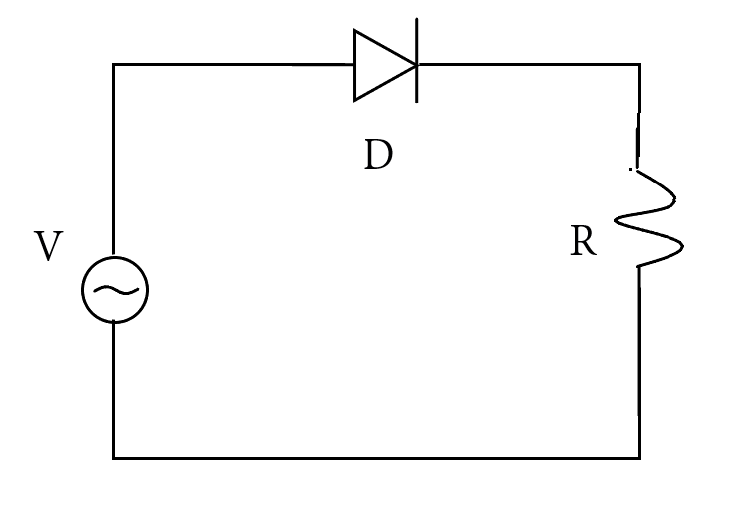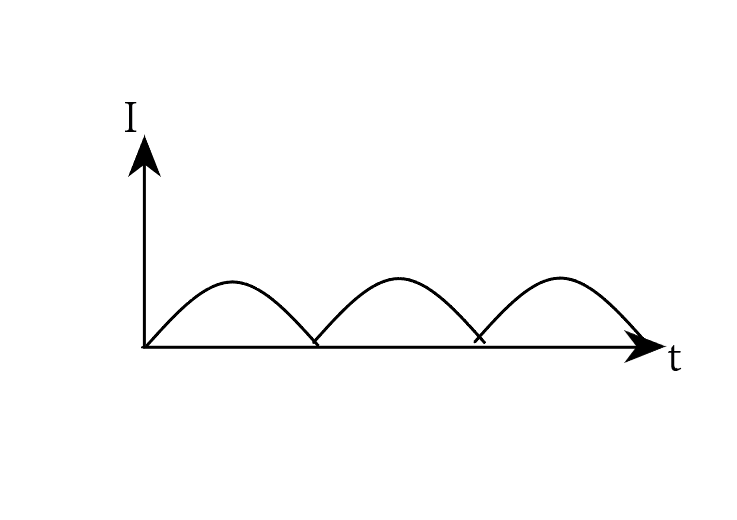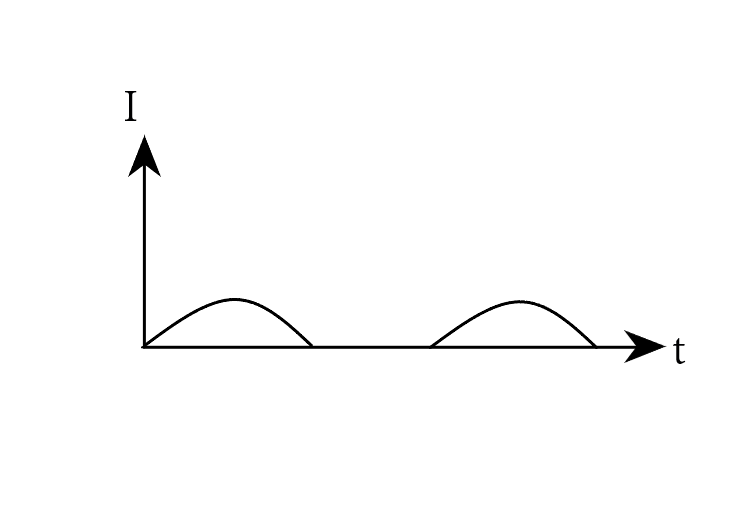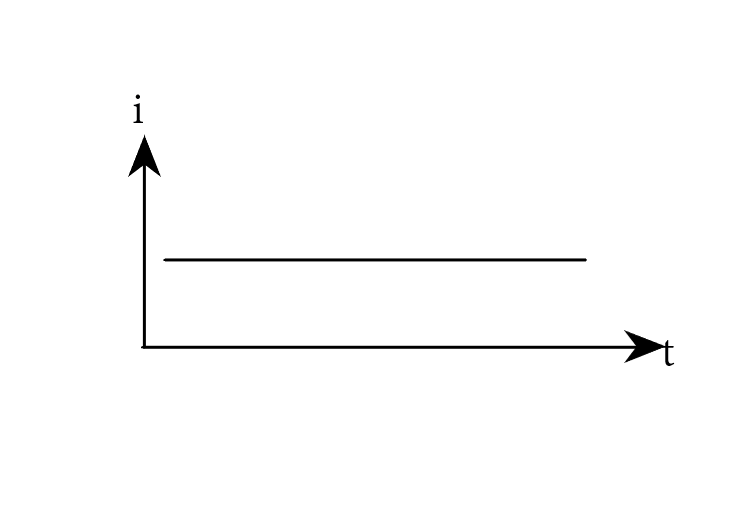
A p-n junction diode shown in the figure can act as a rectifier. An alternating current source (V) is connected in the circuit. The current (I) in the resistor (R) can be shown by:

A.

B.

C.

D.






Answer
474.6k+ views
Hint: The diode is a device that allows current to flow in one direction. During one-half cycle, the diode acts as a closed key, while during the second half cycle, it acts as an open key.
Complete answer: We see a diagram in which one diode is connected in series to a resistor. The voltage input is an alternating source and we are asked for the current flowing through the resistor as a function of time.
Generally, a diode is a device that allows current to flow through it in one direction. Hence when a current is allowed to enter a diode from a particular direction, it allows the current to flow, but when the current is reversed it blocks the current. A diode allows current to flow from the anode (represented by an arrowed triangle in its schematic diagram) to the cathode (represented by a bar in its schematic diagram).
In the case of an ac current, during the first half cycle when the current is positive, the diode allows the current to flow without much interruption, however, during the second half cycle, the diode acts as an open key, and hence, the current is cut off, and no current is allowed to flow in the circuit. The process repeats continuously.
Hence, by observation the correct option is C.
Note: In actuality, the current flowing through the circuit would not be as smooth as represented. This is for a number of reasons. First, the diode has a junction voltage that must be overcome even in forward bias before the current starts to flow. However, the junction voltage is usually low and often negligible for most ac voltages. Also, the current is not exactly directly proportional to voltage as in ohm’s law, hence will not follow the same line as the ac voltage.
Complete answer: We see a diagram in which one diode is connected in series to a resistor. The voltage input is an alternating source and we are asked for the current flowing through the resistor as a function of time.
Generally, a diode is a device that allows current to flow through it in one direction. Hence when a current is allowed to enter a diode from a particular direction, it allows the current to flow, but when the current is reversed it blocks the current. A diode allows current to flow from the anode (represented by an arrowed triangle in its schematic diagram) to the cathode (represented by a bar in its schematic diagram).
In the case of an ac current, during the first half cycle when the current is positive, the diode allows the current to flow without much interruption, however, during the second half cycle, the diode acts as an open key, and hence, the current is cut off, and no current is allowed to flow in the circuit. The process repeats continuously.
Hence, by observation the correct option is C.
Note: In actuality, the current flowing through the circuit would not be as smooth as represented. This is for a number of reasons. First, the diode has a junction voltage that must be overcome even in forward bias before the current starts to flow. However, the junction voltage is usually low and often negligible for most ac voltages. Also, the current is not exactly directly proportional to voltage as in ohm’s law, hence will not follow the same line as the ac voltage.
Latest Vedantu courses for you
Grade 10 | MAHARASHTRABOARD | SCHOOL | English
Vedantu 10 Maharashtra Pro Lite (2025-26)
School Full course for MAHARASHTRABOARD students
₹33,300 per year
Recently Updated Pages
Master Class 11 Economics: Engaging Questions & Answers for Success

Master Class 11 Business Studies: Engaging Questions & Answers for Success

Master Class 11 Accountancy: Engaging Questions & Answers for Success

Master Class 11 English: Engaging Questions & Answers for Success

Master Class 11 Computer Science: Engaging Questions & Answers for Success

Master Class 11 Maths: Engaging Questions & Answers for Success

Trending doubts
State and prove Bernoullis theorem class 11 physics CBSE

1 ton equals to A 100 kg B 1000 kg C 10 kg D 10000 class 11 physics CBSE

State the laws of reflection of light

One Metric ton is equal to kg A 10000 B 1000 C 100 class 11 physics CBSE

Difference Between Prokaryotic Cells and Eukaryotic Cells

1 Quintal is equal to a 110 kg b 10 kg c 100kg d 1000 class 11 physics CBSE




